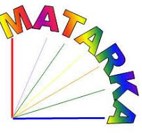Oak-hornbeam forests in the Tolnai-hegyhát, Hungary (Corydali pumilae-Carpinetum Kevey 2008)
Abstract
We studied the phytosociological characteristics of the hornbeam forests in the Tolnai Hegyhát, an area in the northeastern part of Southern Transdanubia. Phytosociologically, the hornbeam-dominated stands in the study area significantly differ from the closed oak forests (Pulmonario mollis-Quercetum roboris) in the high proportion of Fagetalia species as well as the high proportion of European species, as opposed to the high proportion of Quercetea pubescentipetraeae species and sub-Mediterranean and continental species in the closed oak forests. These hornbeam forests are more similar to the hornbeam forests growing in the Transdanubian Mountain Range than those in Southern Transdanubia. We identified these hornbeam forests with the „Corydali pumilae-Carpinetum Kevey 2008” association within the Carpinenion betuli Issler 1931 suballiance.
References
Becking R. W. 1957: The Zürich-Montpellier school of phytosociology. Botanical Review 23: 411–488. https://doi.org/10.1007/bf02872328
Borhidi A. 1961: Klimadiagramme und klimazonale Karte Ungarns. Annales Universitatis Scientiarum Budapestinensis de Rolando Eötvös Nominatae, Sectio Biologica 4: 21–50.
Borhidi A. 1993: A magyar flóra szociális magatartás típusai, természetességi és relatív ökológiai értékszámai. Janus Pannonius Tudományegyetem, Pécs, 95 pp.
Borhidi A. 1995: Social behaviour types, the naturalness and relative ecological indicator values of the higher plants in the Hungarian Flora. Acta Botanica Hungarica 39: 97–181.
Borhidi A., Kevey B. 1996: An annotated checklist of the Hungarian plant communities II. In: Borhidi A. (ed.): Critical revision of the Hungarian plant communities. Janus Pannonius University, Pécs, pp. 95–138.
Borhidi A., Kevey B., Lendvai G. 2012: Plant communities of Hungary. Akadémiai Kiadó, Budapest, 544 pp.
Braun-BlanQuet J. 1964: Pflanzensoziologie Grundzü ge der Vegetationskunde (3rd ed.). Springer Verlag, Wien–New York, 865 pp.
Horváth F., Dobolyi Z. K., Morschhauser T., Lőkös L., Karas L., Szerdahelyi T. 1995: Flóra adatbázis 1.2. Taxon-lista és attribútum állomány. MTA Ökológiai és Botanikai Kutatóintézete, Vácrátót, 267 pp.
Issler E. 1931: Les associations silvatiques haut-rhinoises. Bulletin de la Société Botanique de France 78: 62–141. https://doi.org/10.1080/00378941.1926.10832847
Jakucs P. 1967: Gedanken zur höheren Systematik der europäischen Laubwälder. Contribuţii Botanice, Cluj-Napoca 1967: 159–166.
Kevey B. 2008: Magyarország erdőtársulásai (Forest associations of Hungary). Die Wälder von Ungarn. Tilia 14: 1–488. (+ CD-adatbázis: 244 ábra + 230 táblázat).
Kevey B., Borhidi A. 1998: Top-forest (Aconito anthorae-Fraxinetum orni) a special ecotonal case in the phytosociological system (Mecsek mts, South Hungary). Acta Botanica Academiae Scientiarum Hungaricae 41: 27–121.
Kevey B., Hirmann, A. 2002: „NS” számítógépes cönológiai programcsomag. In: Aktuális flóra- és vegetációkutatások a Kárpát-medencében V. Pécs, 2002. március 8–10. (Összefoglalók), p. 74.
Kevey B., Horváth A., Lendvai G., Simon Gy. 2018: A Tolnai-hegyhát zárt lösztölgyesei (Pulmonario mollis-Quercetum roboris Kevey 2008). Botanikai Közlemények 105(2): 269–284. + Elektronikus mellékletek (E1–E5 táblázat). https://doi.org/10.17716/BotKozlem.2018.105.2.269
Kevey B., Lendvai G., Simon Gy. 2014: A Velencei-hegység gyertyános-tölgyesei (Corydali cavaeCar pinetum Kevey 2008). Kanitzia 21: 219–244.
Király G. (szerk.) 2009: Új magyar füvészkönyv. Magyarország hajtásos növényei. Határozókulcsok. Aggteleki Nemzeti Park Igazgatóság, Jósvafő, 616 pp.
LuQuet A. 1926: Essai sur la geographie botanique de l’Auvergne. Les associations végétales du Massif des Monts-Dores. Geographie Botanique de l’Auvergne. Les Presses Universitaires de France, Paris, pp. 1–263.
Mucina L., Grabherr G., Wallnöfer S. (eds.) 1993: Die Pflanzengesellschaften Österreichs III. Wälder und Gebüsche. Gustav Fischer, Jena – Stuttgart – New York, 353 pp.
Oberdorfer E. 1992: Süddeutsche Pflanzengesellschaften IV. A. Textband. Gustav Fischer Verlag, Jena – Stuttgart – New York, 282 pp.
Pawłowski B., Sokołowski M., Wallisch K. 1928: Die Pflanzenassoziationen des Tatra-Gebirges VII. Die Pflanzenassoziationen und die Flora des Morskie Oko-Tales. Bulletin International de l’Academie Polonaise des Sciences et des Lettres, Classe des Sciences Mathé matiques et Naturelles; Série B: Sciences Naturelles, Cracovie, Suppl. 1927: 205–272.
Pillich F. sen. 1927: Adatok Tolnavármegye flórájához. Magyar Botanikai Lapok 26: 94–97.
Pillich F. jun. 1930a: Simontornya és környéke flórája (1921-1930). Pázmány Péter Tudományegyetem Bölcsészeti Kar, Budapest (kézirat), 74 pp.
Pillich F. jun. 1930b: „Simontornya és környéke flórája”-nak gyógyszerészeti vonatkozásai. Gyógyszerészhallgatók Értesítője 2(6–8): 17–32.
Pillich F. jun. 1930c: A Satureja Pillichiana J. Wagn. jellemzése. Botanikai Közlemények 27 (5–6): 105–111.
Podani J. 2001: Syn-Tax 2000 Computer programs for data analysis in ecology and systematics. Scientia, Budapest, 53 pp.
Soó R. 1964, 1966, 1968, 1970, 1973, 1980: A magyar flóra és vegetáció rendszertani-növényföldrajzi kézikönyve I–VI. Akadémiai Kiadó, Budapest.
Vlieger J. 1937: Aperçu sur les unités phytosociologiques supérieures des Pays-Bas. Nederlandsch Kruid kundig Archief 47: 335–353.


















